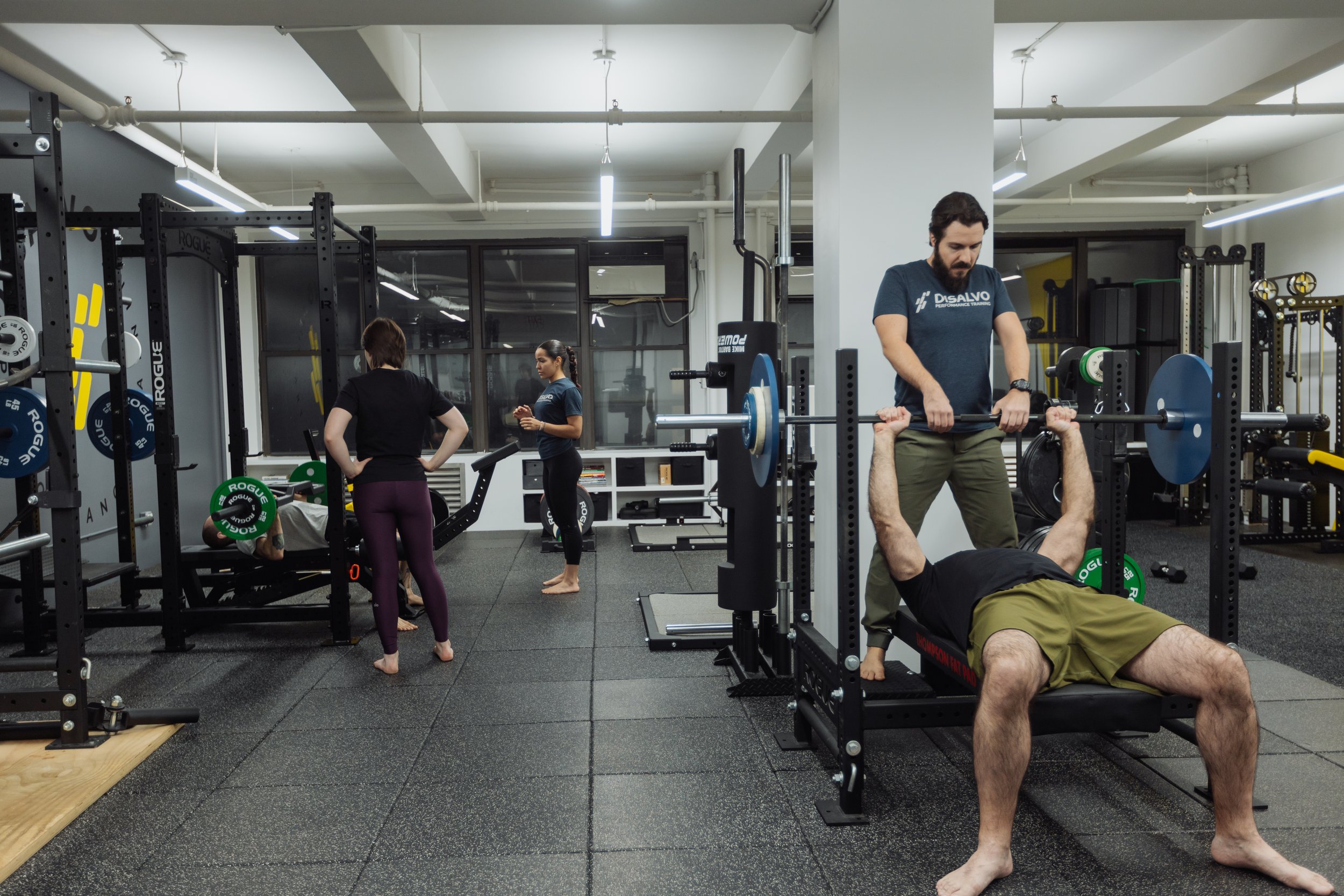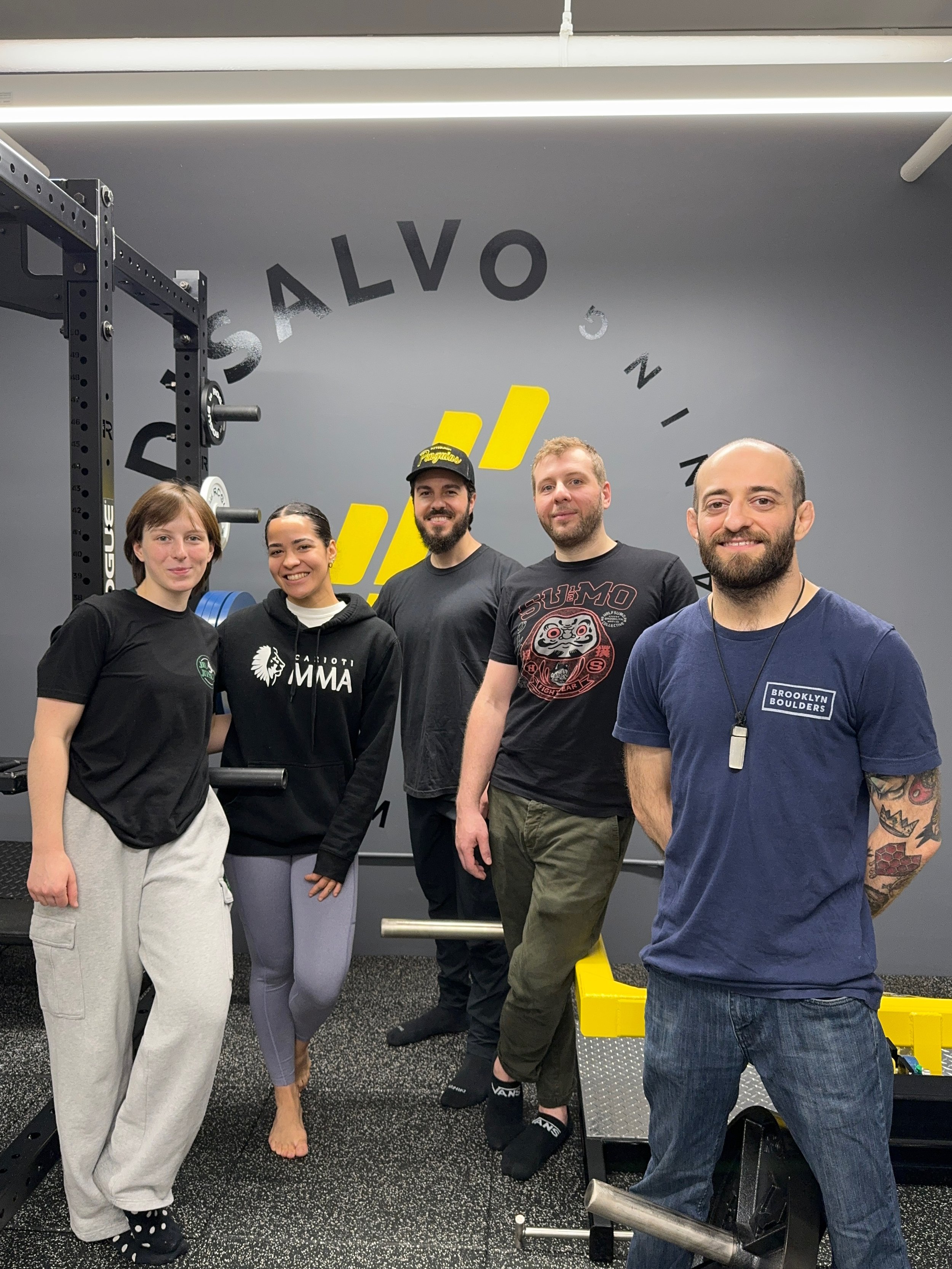No Gi Worlds 2023 Strength Camp Wrap Up
The last six weeks at DiSalvo Performance Training were all about preparation for the IBJJF No Gi World Championship. We had four athletes from 3 academies participating in a camp that was designed to peak them for one of the biggest No Gi tournaments in the world.
Whenever you run a camp for athletes that participate in an individual sport, it’s important to consider the level of each athlete in the group, both as competitors and their overall experience in the gym. We had white belts and a black belt in the group, masters athletes and adult. Some came with decades of experience in the gym, and while another had barely touched a weight in their life. You could say we had quite the spectrum. This is ultimately where organization and coaching come into play.
Besides that, you need to consider the training load and what’s doable and more importantly, recoverable for a person. Jiu Jitsu athletes train a lot and when you’re talking about peaking for a big tournament, there’s usually a reduction of calories involved. Throw increased training load in the mix, and you have a recipe for injury or illness unless you manage the recovery properly.
That’s ultimately how we settled on a two day per week training split. Outside of our gym, they were training anywhere from 3 to 5 times per week at their jiu jitsu schools.
Training Structure
Every workout began with a standard warm-up, where we went over the McGill Big 3, as well as any relevant movement prep for whatever we were tackling that day. Sometimes we drew from squat preparation courtesy of the work of Dr Andrew Lock, while other days we focused intently on the core and lower back integrity.
I’ve written extensively in the past about how I utilize a conjugate-based approach for all our athlete’s programs. Sometimes these programs look a bit more like what you’d call “block periodization,” but in the grand scheme of things, we are concurrently working on many qualities, while we rotate the emphasis. Jiu jitsu isn’t a very linear sport like swimming or distance running for instance, and the training needs to reflect that.
That all said, we focused primarily on strength and movement quality in this camp; so our emphasis was less on speed or conditioning specifically. This was a reflection of the group we had: we started the camp out with our in-depth written and physical assessment. It was determined by myself and my assistant coach on the group, Marcelly Cardia, that the group would benefit most from maximizing their strength and movement qualities.
We focused each workout on the upper or lower body. You could have handled this a few different ways, but we felt in the end, it was going to yield the best results for the group.
As I’ve written both on my Substack, here on this website, and many other places over the last decade: it’s important to work with the athletes in front of you, and not place emphasis specifically on the sport itself. If you have a jiu jitsu athlete who isn’t strong enough, you have a person who isn’t strong enough, and the training methods should reflect that.
Group Camraderie
The thing I was most impressed with was how much this group came together to push one another. It wasn’t an aggressive push that I’ve seen in college sports locker rooms, but rather a very friendly and accountable group. In reality, it’s how you should train as a professional. If I was working with someone on their technique, I could rely on the others to make sure the person next to them did all their reps. There were jokes, friendly competition, and a lot of encouragement.
I know I speak for everyone when I say I was always looking forward to coaching and spending time with the group.
Results
Only time will tell how the camp ultimately affected podium performances, but I am happy to report that all of our participants saw increases in their indicator lifts. We chose three movements and performed them for a 3RM and tested them on our 1st and 12th sessions.
One notable number was a roosterweight (122.5lbs) male competitor brought up his 3 rep deadlift max to 245#, which for him is over 2x his bodyweight. Coming into our camp, he was deadlifting 20# less for the same number of reps and frequently complaining of hip adductor injuries. Six weeks later and he enters the tournament healthy and strong.
Closing Remarks
I want to take the closing moments of this wrap up to thank everyone for their participation, anyone who offered encouragement from afar, and those who helped promote the camp. We had a great time, found it extremely helpful for everyone involved, and made some great new relationships. We hope to continue helping everyone achieve everything that want on the mats and beyond.
If you’d like to work with us 1-on-1 or with a small group for your next big tournament, event or otherwise, feel free to contact us any time.





